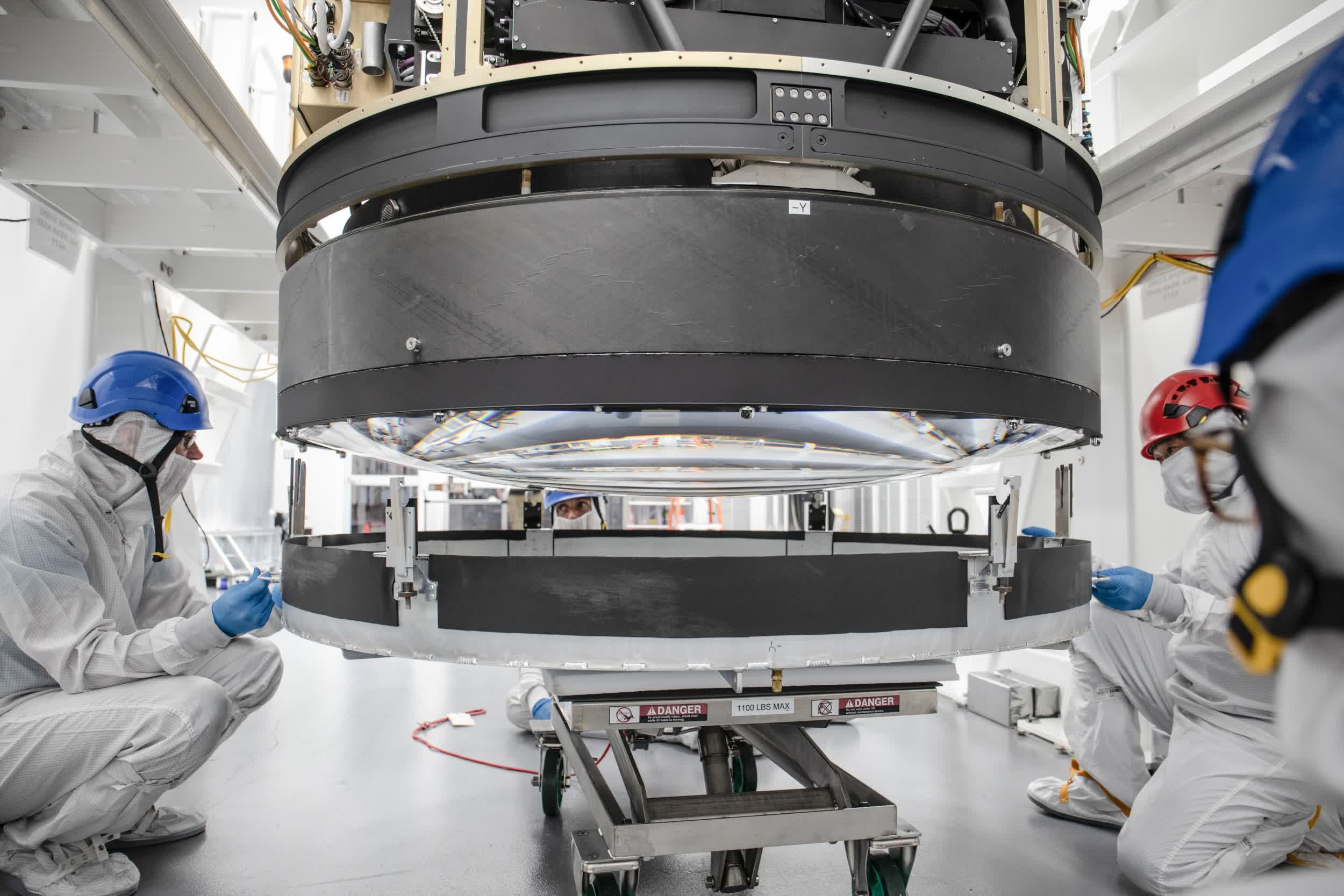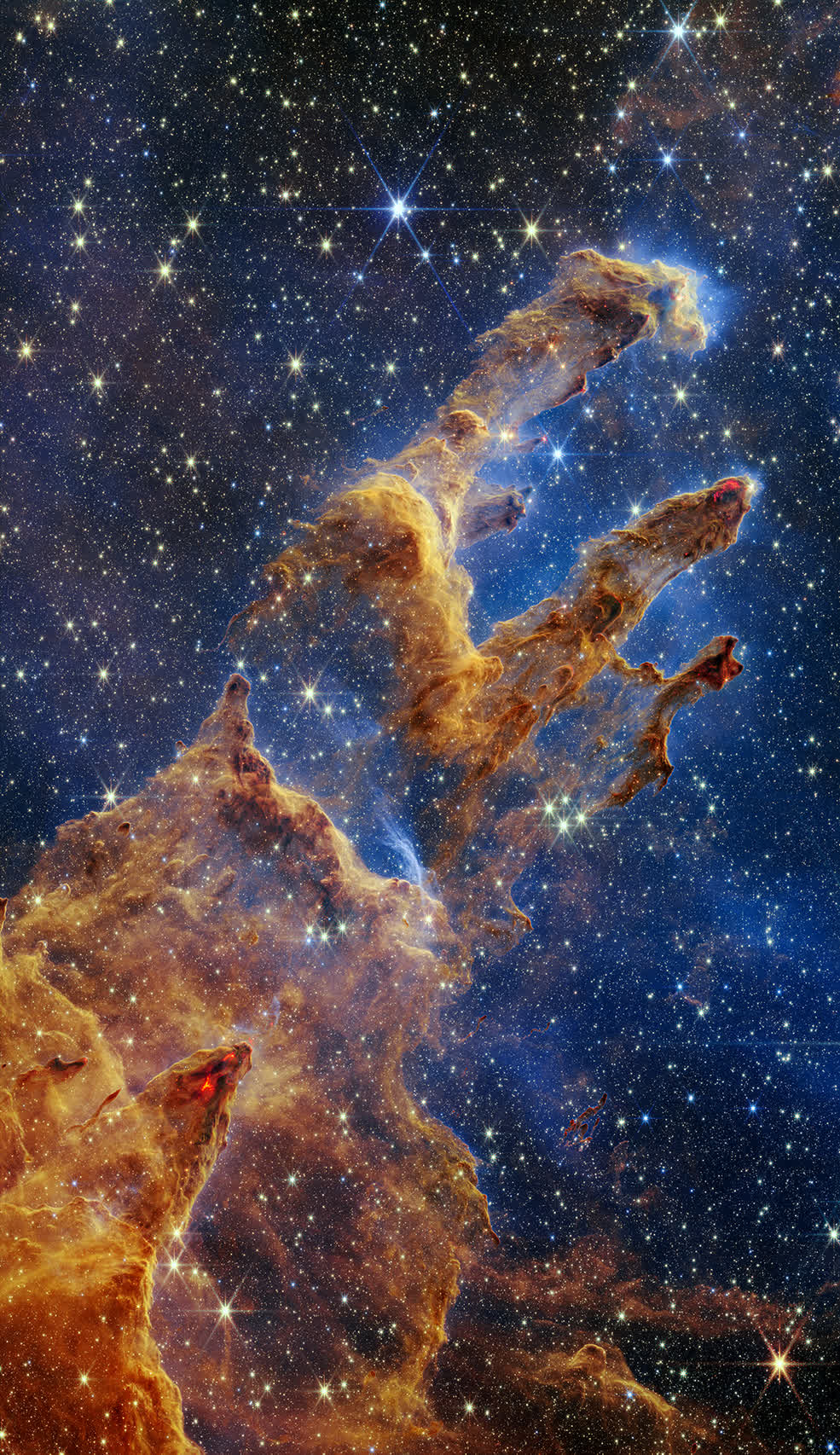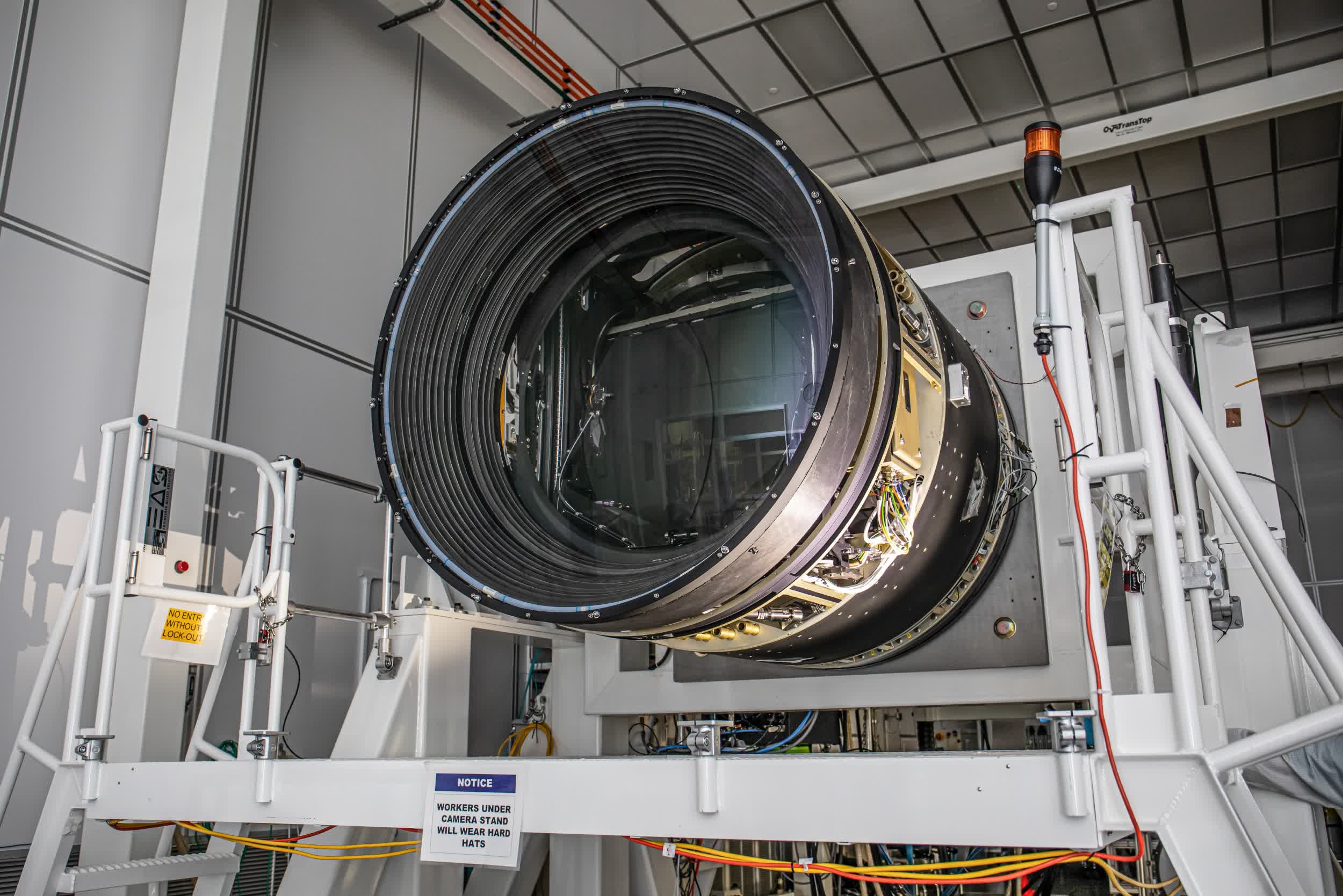Something to look forward to: Engineers at the SLAC National Accelerator Laboratory in California are finalizing work on what will be the world's largest digital camera. The 3,200-megapixel camera (that's 3.2 gigapixels) will be the crown jewel of the Vera C. Rubin Observatory's telescope, which is currently under construction in Chile. The camera features a 25-foot mirror to collect light and a 5.5-foot lens for focusing duties.
According to Rubin Observatory Deputy Director Aaron Roodman, both components are in the Guinness Book of World Records due to their unprecedented size.
Rubin will collect a mind-melting 20 terabytes of data, each and every night, for 10 years. It'll have a viewing angle of 18,000 square degrees and see roughly 20 billion galaxies and 17 billion stars in the Milky Way. The huge treasure trove of data will be used to essentially create a living record of the sky, allowing scientists to chart the progress of cosmic events like the movement of asteroids or comets as well as supernova explosions.
Images will be captured using six filters across a range of the optical electromagnetic spectrum.

The camera will undergo final on-site testing before being flown to its home in northern Chile aboard a Boeing 747 freighter jet. Once installed, scientists will conduct the scope's first test images in the second half of 2023. Should everything go according to plan, the first "official" mission dubbed First Light will take place in March 2024.
A steady stream of data will be available to the scientific community as soon as images are processed. This will allow participants to simultaneously track events in the night sky, compare findings and catch details they may have otherwise missed.
For astronomy enthusiasts, it's a fascinating time to be alive. NASA's groundbreaking James Webb Space Telescope has been sending back jaw-dropping images of the universe at regular intervals since July, private space tourism is now a thing and NASA is closer than ever to sending humans back to the Moon. We also recently hit an asteroid with a spacecraft as part of the first successful planetary defense system.

Fringe skygazers also have a lot to digest. NASA recently announced the team that'll study unidentified aerial phenomena (UAP) over the next nine months. They'll consider data gathered by civilian government entities, commercial providers and other sources, but not classified data. A full report on their findings is expected to be released to the public in mid-2023.
A follow-up to the June 2021 preliminary report on the subject from the Office of the Director of National Intelligence (ODNI) is also expected any day now and some believe it could include data relating to UAP observed in space. Some enthusiasts are convinced that recent activity on the subject is part of a slow-drip disclosure project to prepare the public for a reality in which we are not alone in the universe.
